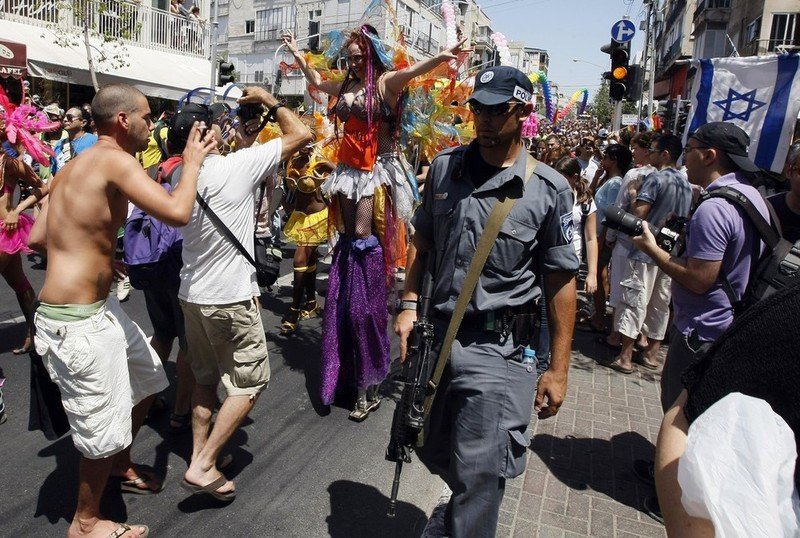|
|
Pride Parade, Tel Aviv, Israel
|
Conflicts and peace treaties
Arab nationalists led by Egyptian President Gamal Abdel Nasser refused to recognize Israel, calling for its destruction. By 1966, Israeli-Arab relations had deteriorated to the point of actual battles taking place between official Israeli and Arab forces. In 1967, Egypt expelled UN peacekeepers, stationed in the Sinai Peninsula since 1957, and announced a partial blockade of Israel's access to the Red Sea. Israel saw these actions as a casus belli for a pre-emptive strike that launched the Six-Day War, in which Israel achieved a decisive victory and captured the West Bank, Gaza Strip, Sinai Peninsula and Golan Heights. Jerusalem's boundaries were enlarged, incorporating East Jerusalem, and the 1949 Green Line became the administrative boundary between Israel and the occupied territories.
The failure of the Arab states in the 1967 war led Arab non-state actors to have a more central role in the conflict. Most important among them is the Palestinian Liberation Organization (PLO), established in 1964, which initially committed itself to "armed struggle as the only way to liberate the homeland". In the late 1960s and early 1970s, Palestinian groups launched a wave of attacks against Israeli targets around the world, including a massacre of Israeli athletes at the 1972 Summer Olympics in Munich.
|
|









